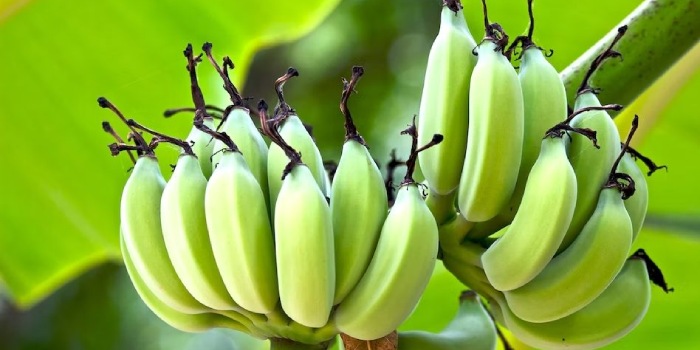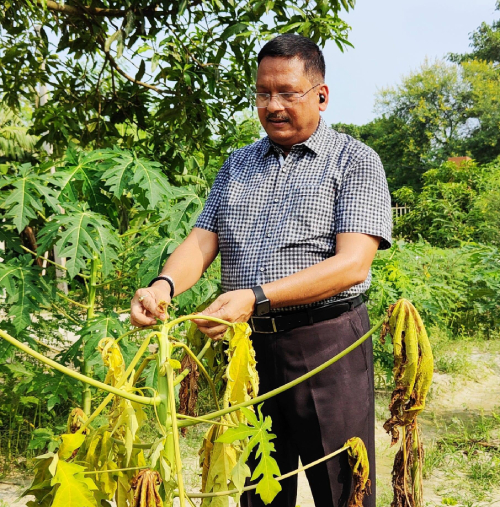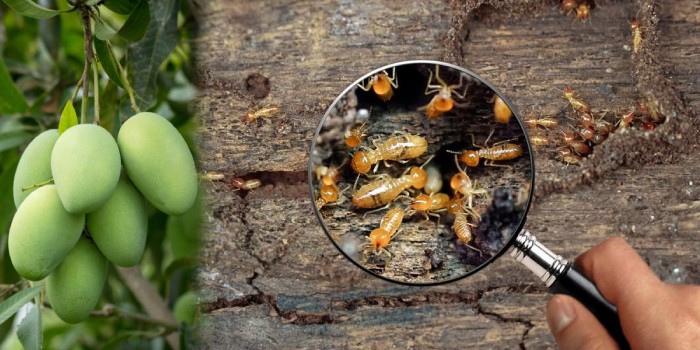
Title- The Contribution of Azolla to Agriculture.
- Raghvendra Kumar Kushwaha –( Research Scholar PG)
- Saurabh Thakur (Research Scholar PG)
- Rohit Kumar Singh (Research Scholar PG)
M.Sc. (Agri.) Soil Science,
Sam Higginbottom University of Agriculture,
Technology and Sciences Allahabad-211007,U.P
Corresponding author Gmail- rkk18200@gmail.com
Introduction-
Azolla is a small water-loving fern of the Salviniaceae family that is known for its rapid development and free-floating features. It forms a genetic symbiotic relationship with Anabcazollae, a diazotrophic cyanobacteria. The Azolla Event, which occurred 49 million years ago, was important in Azolla's history. Azolla grew in aquatic environments, especially the Arctic Ocean, generating huge surface mats that lowered the greenhouse effect and changed the Earth's temperature. Azolla, which started in Africa, Asia, and Australia, is now found all over the world, particularly in areas with adequate freshwater habitats.
Characteristics-
Azolla leaves are triangular or polygonal and float on the water's surface alone or in groups. Plant diameters range from 13 to 1 inch (1–2.5 cm) for small species like Azolla pinnata to 6 inches (15 cm) or higher for Azolla nilotica. A. filiculoides was first introduced to Hawaii in the early twentieth century. It is often referred to as taro because taro grows well in wet or marshy areas, which are similar to the wetland conditions in Azolla. When the taro reaches maturity, it throws a shade over the Azolla below the canopy, causing it to slowly decompose and releasing nutrients into the soil-water system for the taro plants to consume. It has multiple branches, and the top of it is highly leafed. The structure consists of a pair of alternating leaves. Each leaf has two lobes, the top one of which is green and aerial.
Azolla species used for agriculture:-
The following species are some of the various varieties that are used to cultivate azolla.
- Azolla filiculoides: Also referred to as the Pacific mosquito fern, this species is found in North America but has spread aggressively across almost the whole world.
- Azolla mexicana:- This species is native to the Americas, mainly Mexico, and it frequently favours areas with water.
- Azolla pinnata: This species is endemic to Asia and can be found in waters that are stable or move gently.
- Azolla caroliniana:- The species is indigenous to the southeastern United States and is often referred to as the Carolina mosquito fern.
- Azolla microphylla: This species of Azolla is native to Australia and parts of Asia and is distinguished by its tiny size and striking green colour.
- Azolla cristata:- This species, which is likely found in Asia and Africa, among other places, has easily identifiable symbols on its leaves.
- Azolla rubra: This species, which is known for its reddish colouring, has been found all over the world.
- Azolla nilotica:- This species is well-suited to tropical climates and is native to Africa, particularly the Nile district.
- Azolla japonica:- This plant is a common biofertilizer in agriculture and is native to Asia, particularly China and Japan.
- Azolla filiculoides x Azolla rubra hybrid:- This cross between Azolla filiculoides and Azolla rubra commonly occurs in water conditions and may display a variety of colours, from green to reddish.
Pit method of preparing azolla:-
Which requires little infrastructure and is suitable for farmers with limited resources, is a cheap and simple way to grow Azolla in India. Azolla pit construction involves the following steps:
- Dig a pit that is 1.5–2 metres in length, 1–1.75 metres in width, and 30–45 centimetres deep. Avoid places with high shadows. To keep water in the pit, cover it with a plastic sheet or tarp, ensuring that the material reaches just over the pit's boundaries. to prevent water leakage.
- Fill the hole with cow dung or compost to deliver nutrients for Azolla's development. Fill the pit with water so the bottom 10–15 centimetres remain free of chemicals and pollutants.
- Gently distribute the first culture from an accurate source to introduce Azolla. Within a few days, the azolla will grow and cover the water's surface.
- Maintain the water level by paying attention to it and making changes as required. Avoid overfilling because excessive water could slow down Azolla growth.
- When the Azolla reaches the water's surface, harvest it by filtering it through a sieve and storing only a small quantity for the coming cycle.

Step- 1

Step-2

Step-3

Step- 4

Step-5

Step-6
Picture:- Different step of azolla production
Uses of azolla:-
1) Organic fertilizer and nitrogen fixing: Azolla, a symbiotic relationship with Anabaena azolla, enables nitrogen fixation and organic fertilisation. Farmers can use azolla as green manure or cover crop, reducing chemical fertilizer demand. Azolla releases nutrients, improving soil fertility and structure, leading to better plant development, making agriculture more environmentally friendly and cost-effective.
2) Rice farming:- The species Azolla pinnata is a natural bio-fertilizer used in rice paddies to reduce weed growth and deliver nitrogen to rice plants. Its nitrogen-fixing abilities, along with those of the blue-green algae Anabaena, make it a successful weed suppressor. Azolla develops quickly and generates a thick mat, preventing weed development and enhancing crop yields.
Reducing cultivation expenditures by 25% can boost paddy output by 30–40%.
3) Livestock feeds:- Azolla is a high-protein, essential amino acid, vitamin, and mineral-rich feed source for animals, especially chicken and fish. Proteins, required amino acids, vitamins, growth promoter intermediary molecules, and minerals are available. Azolla is easily digested by animals, which leads to 15-20% higher feed utilisation, average daily growth, and milk production. It is one of the most cost-effective and efficient animal feed choices, and its biochemistry makes it an excellent source of proteins, vital amino acids, vitamins, growth boosters, and minerals. Since Azolla has a greater protein content than other green fodder crops and aquatic macrophytes, there has been an increase in the study and marketing of it as a livestock feed. Azolla stimulates development, meat quality, and carcass features during processing.
4) Role in environment:- Azolla is a multipurpose plant with applications including biological remediation, aquaculture, the conservation of water, managing ecosystems, biodiversity support, water quality improvement, and evaporation reduction. It absorbs toxic metals, pollutants, and unwanted nutrients from sources of water, therefore improving water quality and decreasing nutrient runoff. Azolla is also a natural feed source for aquatic organisms, lowering water temperatures and minimising their impact. It also supports cleaner ecosystems and native biodiversity. Due to its shady development on water surfaces, Azolla is an important
plant for deserts and drought-prone regions. Azolla's fast growth collects carbon dioxide, helping to store it and reduce the negative effects of global warming.
5) Bio-fuel- Methane gas is produced by the anaerobic fermentation of azolla and rice straw for bio-fuel generation. Azolla species are environmentally friendly, have a high lipid and energy content, and grow well in marshy areas and wastewater. Commercial-scale bio-fuels from Azolla are being researched, with a catalyst load of 2% and a molar ratio of 1:9. Because of its availability and low cost, algae is a cost-effective raw material source for biodiesel synthesis.
Traditional Medicine:-
Azolla has medicinal propertiesz such as antioxidant, anti- inflammatory, and anti-apoptotic effects. It contains antibacterial nutrients and phytochemical components like flavonoids, tannins, and saponins. The study used different amounts of dry Azolla extract to stop Salmonella typhii bacteria's development and investigated its potential in traditional medicine. Azolla pinnate ethanolic extract (APE) also protected rodents against lead- induced liver injury.
Nutrient content in Azolla:- An aquatic fern called azolla is utilised as food and fodder to give animals wholesome diet. It is also a variety of aquatic fern that fixes nitrogen. It contains a variety of nutrients in significant amounts, which can be categorized as follows.
| S. NO. | Constituents | Dry matter (%) |
| 1. | Crude protein | 24-30 |
| 2. | Carbohydrates | 0.2- 1 |
| 3. | Crude fat | 3.3- 3.6 |
| 4. | Starch | 6.54 |
| 5. | Nitrogen | 4-5 |
| 6. | Phosphorous | 0.5- 0.9 |
| 7. | Potassium | 2- 4.5 |
| 8. | Lignin | 11.4 |
| 9. | Vitamin A | 300- 600 ppm |
| Amino acids | ||
| 1. | Lysine | 4.7 |
| 2. | Alanine | 6.4 |
| 3. | Aspartic acid | 9.3 |
Table 1- Several forms of azolla’s nutrients.
Source- Ritesh at el. (2014).
Azolla application in rice fields:-
Kannaiyan (1982) and Bartharkur and Talukdar (1983) found 36.6 – 38.0 % increase in grain yield due to the azolla as a dual crop (S. Kannaiyan, 1993). The production capacity of paddy is quickly increased when Azolla is used in paddy fields. Typically, paddy fields utilise 20 kg of azolla per hectare. Using azolla in paddy fields results in a variety of improvement, which are categorized in the graphic below.

Source- Bharati Kollah et al. (2016)
The following are some of the many advantages of using it in paddy fields.
- It enhances the output of paddy by 50% when used in paddy fields.
- As opposed to chemical fertilizers that are nitrogenous, azolla offers a number of beneficial long- term impacts, such as enhancing soil fertility by raising total organic carbon, as well as phosphorus, potassium, and organic matter.
- In paddy field, it stops weeds from growing and suppresses them, killing them.
Reference:-
- Bharati Kollah at el. (2016). Aquatic microphylla azolla: a perspective paradigm for sustainable agriculture, environment and global climate change. Environmental sciences and pollution research.
- Ritesh at el.(2014).Advancements in the utilization of azolla- anabaena system in relation to sustainable agricultural practices. ResearchGate.








